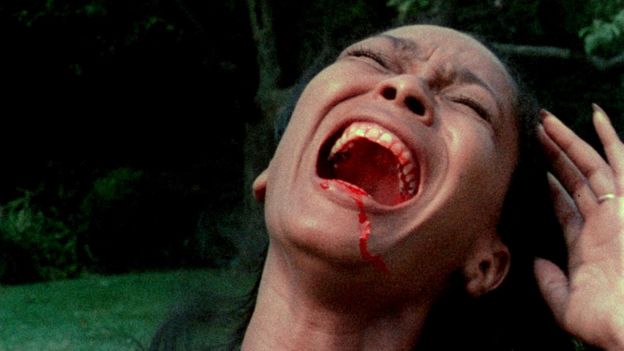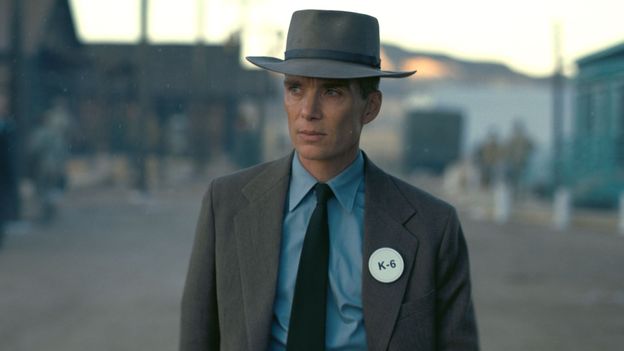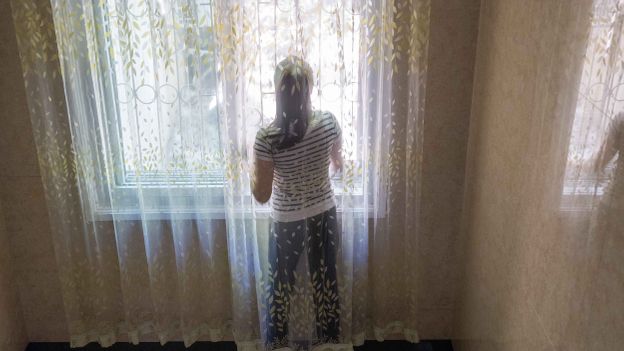Clarke’s role as Ganja is for Weston, the film’s most potent element. “In her autonomy, [Clark] is one of the major things that sets this film apart from its peers of the time. In the era of blaxploitation, black women don’t get the best representation, shall we say. Their roles can be quite stifling but her performance and her character is given so much richness. She’s such an alive figure, and that’s really rare.”
Watching Ganja & Hess is like listening to an expertly conducted orchestra. Gunn pulls from the distinct talents of each member of his ensemble and across arthouse, horror, blaxploitation and beyond to create a unique sensibility that is heart-stoppingly gorgeous. From the moment when Ganja and Hess marry, their union juxtaposed with symbols of Christianity and African spirituality, to the scene when Hess lovingly curses her with the same vampiric affliction that has transformed him, each frame radiates with meaning and is carefully composed like a Baroque oil painting. Amid the haziness of the 16mm cinematography, black skin lightly shimmers and crimson blood is preternaturally vivid. It’s sexy, confounding and deeply moving, and watching it, it seems to enter your bloodstream, moving gently through you and leaving you indelibly marked by all the beauty and despair Gunn sees in the world.
From rapture to derision
The film became the only US film selected for the 1973 Cannes Film Festival’s Critics Week and reportedly received a rapturous reception. While sincere enthusiasm is often hard to measure at a place like Cannes, where standing ovations are de rigueur, Forster says there was no denying that “Gunn was – as with many black artists of the mid-century like Richard Wright, Chester Himes or even James Baldwin to an extent – better recognised by a French audience than the predominantly white American audience. I do think that [the story of its reception] at Cannes might be somewhat exaggerated. But what exists now is French scholars and critics writing in French journals, celebrating the film or celebrating Gunn.”
What is beyond doubt is just how poorly the film was then treated when it came back to the US. It premiered at New York’s Playboy Theatre and was derided by the critical establishment. Bad reviews led to bad box office and Kelly-Jordan Enterprises scrambled to recoup what they could, selling the rights to grindhouse company Heritage Pictures who put out a new version, substantially cutting it while including some additional footage and renaming it Blood Couple. Later, they labelled it with a whole host of titles including Black Evil, Black Vampire, Blackout: The Moment of Terror, Double Possession and Vampires of Harlem. Gunn wrote a damning indictment of his treatment in a now-famous open letter in The New York Times – the very paper that had described his film as “ineffectually arty”. Titled “To Be a Black Artist”, it is nearly as impressive a masterwork as the film itself.
It begins “THERE are times when the white critic must sit down and listen. If he cannot listen and learn, then he must not concern himself with black creativity.” He goes on to point out how little care the critics put into their reviews, fumbling major plot points. He points out that not one of them mentioned Cannes and took pride in their fellow American’s recognition abroad, but he reserves particular vitriol for the fact that Marlene Clark, “one of the most beautiful women and actresses I have ever known, was referred to as ‘a brown-skinned looker’ (New York Post). That kind of disrespect could not have been cultivated in 110 minutes. It must have taken at least a good 250 years.”
Gunn had his name removed from Blood Couple and the other butchered iterations of the film. A single print of Gunn’s original version of Ganja & Hess remained in existence; that was donated to New York’s Museum of Modern Art. With Gunn’s approval, it was screened there until its later restoration. In 2018, the distribution company Kino Lorber, The Museum and Martin Scorsese’s Film Foundation collaborated to restore and remaster it in HD from a 35mm negative, making it more available for a wider reappraisal as a triumph by one of the great African-American artists. In the subsequent years, it has continued to be screened in rep and made available on multiple streaming platforms.













